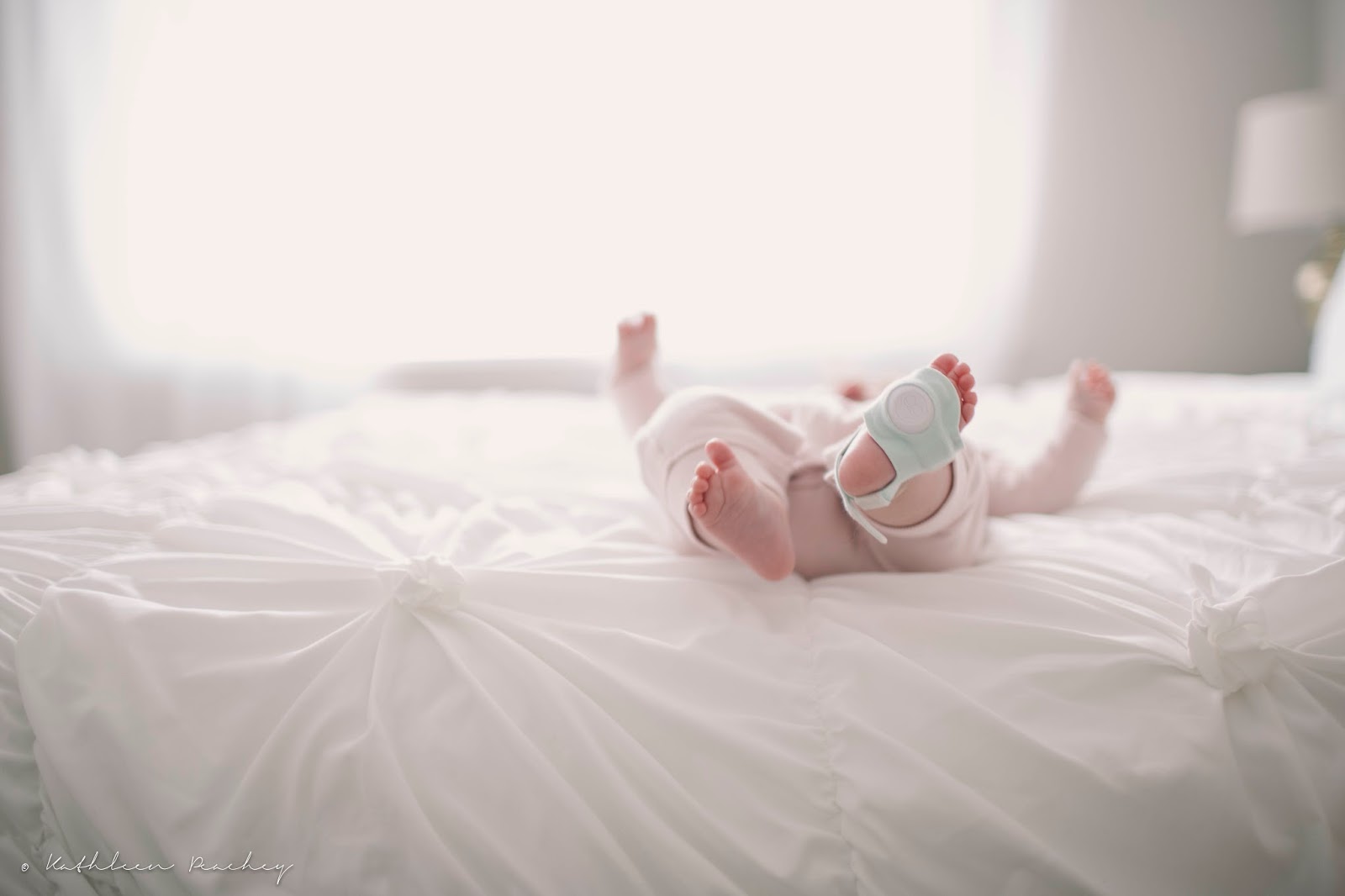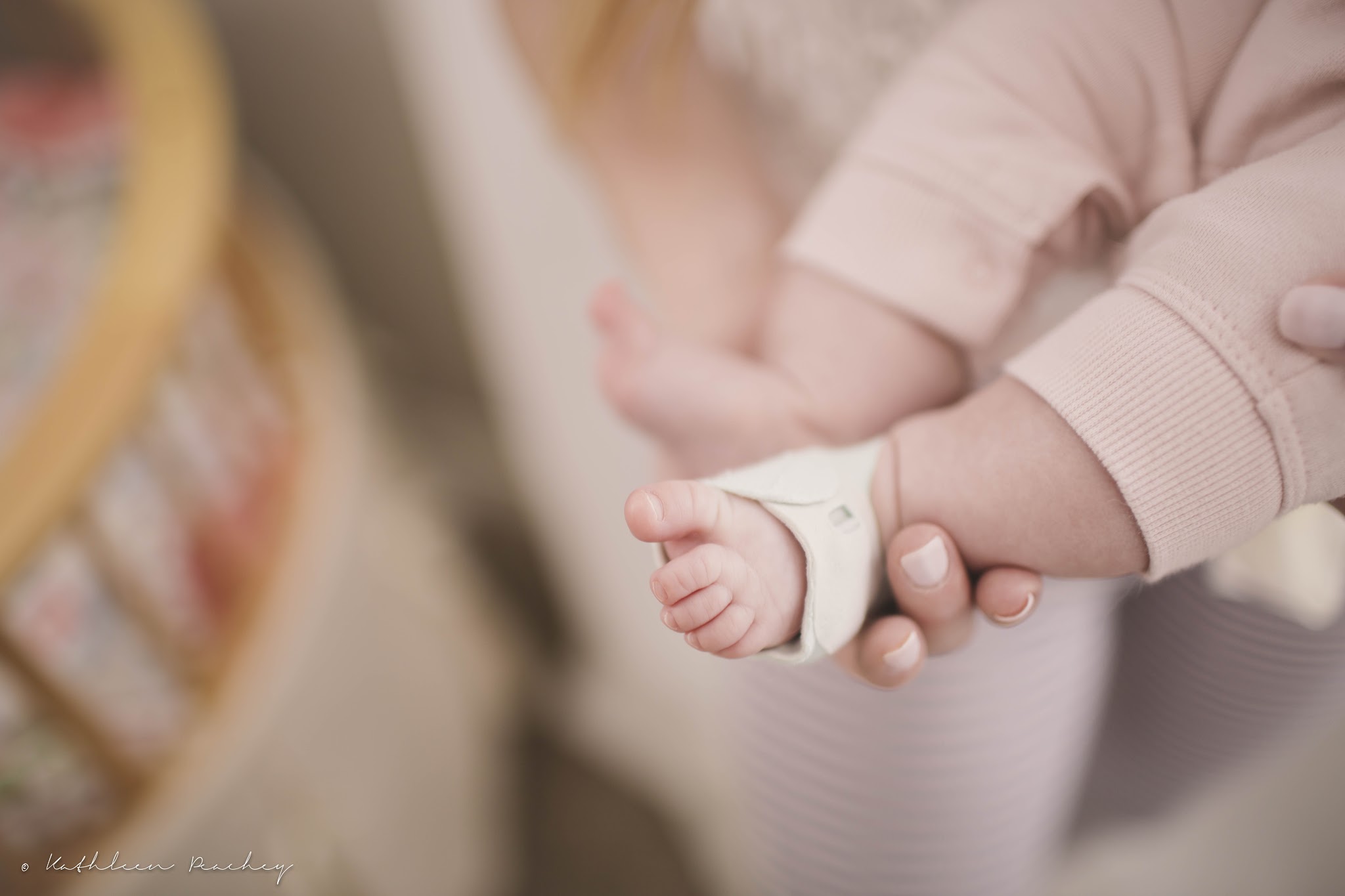
If the baby stops breathing, the monitor alarms. If the baby is breathing, the monitor is moving and doesn’t alarm. With my first child, we used the Snuza monitor, which clips to the child’s diaper and monitors movement. I find this to be extremely helpful and informative since I have a hard time keeping track of her wake times at night. It’s not only great for tracking her heart rate and oxygen levels, but it also keeps track of her sleep patterns. Our third child is 6 weeks old, and we use the Smart Sock on her every night. She is 19 months old now, but she wore the Owlet every night until she grew out of it. Though an EKG after birth showed no arrhythmia, I am so glad I purchased the Owlet Smart Sock! It helped me feel reassured and confident that she was fine, especially with my slight postpartum anxiety. I was terrified something was wrong with the baby’s heart that they couldn’t see on ultrasound. This is when I ordered my Owlet Smart Sock 2. Later scans showed the arrhythmia had resolved, as they often do in fetuses, but it still scared me. When I was about 33 weeks pregnant, my obstetrician heard a cardiac arrhythmia, or irregular heartbeat, on a doppler check in the office. I needed to know it was beneficial before I spent the money. Personally knowing babies whose lives had been saved due to this monitor was a huge push for me.
OWLET SOCK RED ALARM FULL
The website and reviews of the product is full of parents sharing similar stories. Another was woken to low oxygen alarms and found her baby struggling to breathe. One person I know discovered a cardiac issue in their child that had not (and possible would not have been) detected without this monitor. I know of several people who say the Owlet Smart Sock saved their baby’s life. It can alert you that your baby needs immediate care, even when you’re asleep or away from your baby. When they work, however, they can save lives and notify you of dangerously high or low heart rates or low oxygen levels. Many pediatricians do not recommend them as they can give false alarms and send parents into a panic. Please see my Disclaimer Policy for more information.** First, are breathing monitors necessary for babies?īreathing and heart rate monitors can be a very controversial topic.

This post contains affiliate links, meaning I may earn a small commission at no cost to you if a purchase is made from my website.

This article is not sponsored by Owlet, this is my honest review as a purchaser of this product. The best way to prevent SIDS is to follow the AAP guidelines and put infants to sleep alone, in an empty crib, on their backs in a crib or bassinet. The Owlet website says it is intended for “healthy infants” and does not replace safe sleep habits. Make sure to always observe safe sleeping practices.**It should be noted that these devices cannot claim to prevent SIDS, and are not designed to be medical devices, but they can give you some peace of mind. There are other possibilities that could lead to a red notification. This is because there is less blood flow in the foot for the pulse oximeter to pick up. This is not common but cold feet can cause red notifications. In higher elevation areas (like areas in Colorado), baby's oxygen levels can sit lower than average.Įlevation doesn't necessarily cause red notifications but can make them more frequent. This is also not common.Įlevation can affect oxygen level. Sometimes, a swing, vibrating mat, or even patting your baby's back can be mistaken for their heart rate and set off the notification. What Should I Do If I Get a Red Notification?Īny movement picked up by the Smart Sock is assumed to be your baby's movement. When to call your pediatrician (American Academy of Pediatrics) If sickness persists it may be a good idea to call your pediatrician.

Try using a nasal aspirator to clean out baby's nose. Red notifications can be more frequent when baby is sick or congested. Review the following articles for help on sock fit:Ĭheck for signs of sickness.
OWLET SOCK RED ALARM WINDOWS
The most common issue is that the sock is close enough to get a reading, but still too loose, causing faint readings.Ĭheck to make sure the sensor windows are flat against your baby's skin. Smart Sock Fit & Placement Sock Too Loose Review the following article for help on finding the best fit and placement: Sock fit/placement issues are the most common cause of false notifications.Įven in the hospital, the #1 cause of incorrect readings is poor sensor placement. If it was not an emergency, it was probably caused by one of the following. When receiving a red notification, the very first thing you should do is check on your baby.


 0 kommentar(er)
0 kommentar(er)
